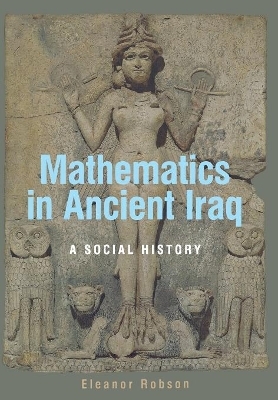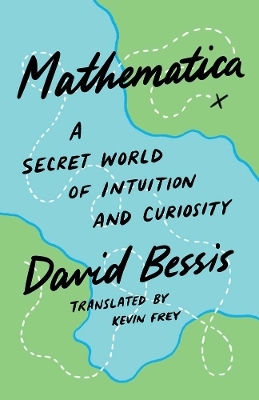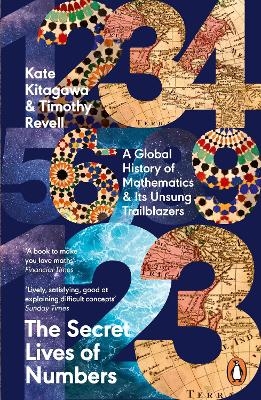
Mathematics in Ancient Iraq
Princeton University Press (Verlag)
978-0-691-09182-2 (ISBN)
This monumental book traces the origins and development of mathematics in the ancient Middle East, from its earliest beginnings in the fourth millennium BCE to the end of indigenous intellectual culture in the second century BCE when cuneiform writing was gradually abandoned. Eleanor Robson offers a history like no other, examining ancient mathematics within its broader social, political, economic, and religious contexts, and showing that mathematics was not just an abstract discipline for elites but a key component in ordering society and understanding the world. The region of modern-day Iraq is uniquely rich in evidence for ancient mathematics because its prehistoric inhabitants wrote on clay tablets, many hundreds of thousands of which have been archaeologically excavated, deciphered, and translated. Drawing from these and a wealth of other textual and archaeological evidence, Robson gives an extraordinarily detailed picture of how mathematical ideas and practices were conceived, used, and taught during this period. She challenges the prevailing view that they were merely the simplistic precursors of classical Greek mathematics, and explains how the prevailing view came to be.
Robson reveals the true sophistication and beauty of ancient Middle Eastern mathematics as it evolved over three thousand years, from the earliest beginnings of recorded accounting to complex mathematical astronomy. Every chapter provides detailed information on sources, and the book includes an appendix on all mathematical cuneiform tablets published before 2007.
Eleanor Robsonis reader in ancient Middle Eastern science at the University of Cambridge and a fellow of Darwin College, Cambridge. Her books include Mesopotamian Mathematics, 2100-1600 BC and, edited with Jacqueline Stedall, The Oxford Handbook of the History of Mathematics.
List of Figures xi List of Tables xvii Preface xxi Acknowledgments xxv Chapter One: Scope, Methods, Sources 1 1.1 The Subject: Ancient Iraq and Its Mathematics 1 1.2 The Artefacts: Assyriological and Mathematical Analysis 8 1.3 The Contexts: Textuality, Materiality, and Social History 17 Chapter Two: Before the Mid-Third Millennium 27 2.1 Background and Evidence 28 2.2 Quantitative Management and Emerging Statehood 33 2.3 Enumeration and Abstraction 40 2.4 Symmetry, Geometry, and Visual Culture 45 2.5 Conclusions 51 Chapter Three: The Later Third Millennium 54 3.1 Background and Evidence 55 3.2 Maps, Plans, and Itineraries: Visual and Textual Representations of Spatial Relationships 60 3.3 Accounting for Time and Labour: Approximation, Standardisation, Prediction 67 3.4 The Development of the Sexagesimal Place Value System (SPVS) 75 3.5 Conclusions 83 Chapter Four: The Early Second Millennium 85 4.1 Background and Evidence 86 4.2 Metrology, Multiplication, Memorisation: Elementary Mathematics Education 97 4.3 Words and Pictures, Reciprocals and Squares 106 4.4 Measurement, Justice, and the Ideology of Kingship 115 4.5 Conclusions 123 Chapter Five: Assyria 125 5.1 Background and Evidence 126 5.2 Palatial and Mercantile Numeracy in Early Assyria 129 5.3 Counting Heads, Marking Time: Quantifi cations in Royal Inscriptions and Records 136 5.4 Aru: Number Manipulation in Neo-Assyrian Scholarship 143 5.5 Conclusions 149 Chapter Six: The Later Second Millennium 151 6.1 Background and Evidence 151 6.2 Tabular Accounting in Southern Babylonia 157 6.3 Land Surveyors and Their Records in Northern Babylonia 166 6.4 Quantifi cation as Literary Device in the Epic of Gilgames 177 6.5 Conclusions 181 Chapter Seven: The Early First Millennium 183 7.1 Background and Evidence 184 7.2 Libraries and Schools: The Formalisation of the First-Millennium Scribal Curriculum 192 7.3 Home Economics: Numeracy in a Mid-First-Millennium Urban Household 198 7.4 Measuring Houses, Maintaining Professionalism 206 7.5 Conclusions 212 Chapter Eight: The Later First Millennium 214 8.1 Background and Evidence 215 8.2 Babylon: Mathematics in the Service of Astronomy? 220 8.3 Achaemenid Uruk: The Sangu-Ninurta and Ekur-z?kir Families 227 8.4 Seleucid Uruk: The Hunzu and Sin-leqi-unninni Families 240 8.5 Conclusions 260 Chapter Nine: Epilogue 263 9.1 The Big Picture: Three Millennia of Mathematics in Ancient Iraq 263 9.2 Ancient Mathematics in the Modern World 268 9.3 Inside Ancient Mathematics: Translation, Representation, Interpretation 274 9.4 The Worlds of Ancient Mathematics: History, Society, Community 284 9.5 Conclusions 288 Appendix A: Metrological Systems 291 Appendix B: Published Mathematical Tablets 299 Notes 345 Bibliography 373 Index of Tablets 409 Subject Index 425
| Erscheint lt. Verlag | 28.9.2008 |
|---|---|
| Zusatzinfo | 24 halftones. 51 line illus. 60 tables. |
| Verlagsort | New Jersey |
| Sprache | englisch |
| Maße | 152 x 235 mm |
| Gewicht | 794 g |
| Themenwelt | Mathematik / Informatik ► Mathematik ► Geschichte der Mathematik |
| ISBN-10 | 0-691-09182-X / 069109182X |
| ISBN-13 | 978-0-691-09182-2 / 9780691091822 |
| Zustand | Neuware |
| Haben Sie eine Frage zum Produkt? |
aus dem Bereich


